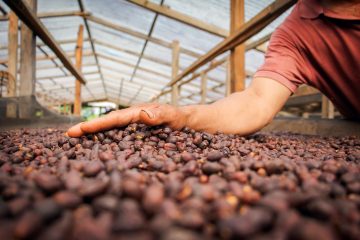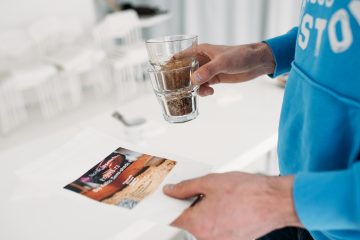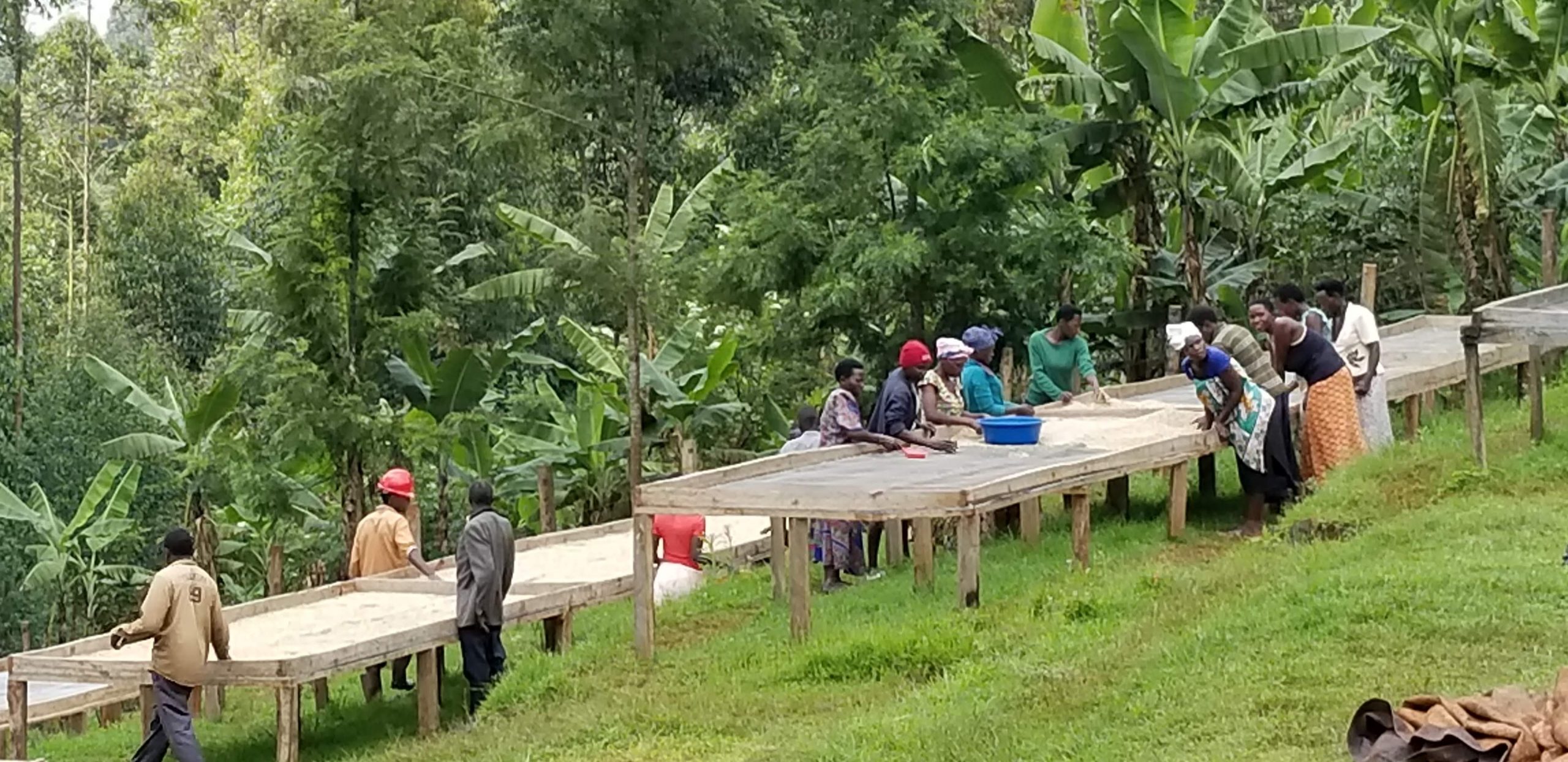What was previously our buying department is now a separate company, Tropiq. In addition to sourcing for Nordic Approach, Tropiq manage large volume sourcing for customers wanting to work more directly at origin. Learn more about Tropiq here.
Our East Africa buyer, Alexander Lenouvel Hansen, is detailing the hard work of a coffee buyer on the Tropiq blog. This is Part 5 in a series of posts called “What Does A Green Coffee Buyer Do.” If you haven’t read the previous posts, we recommend you start here, Part 1: Planning
I have cupped through thousands of coffees, and selected the best possible lots to meet our customers’ needs. Now it is time to book those coffees and get them on the water.
Someone once told me, you have to babysit your coffee. Follow it everywhere it goes and make sure that it has what it needs to get out the door, so that is my main goal in this part of the season. Of course, every other buyer is doing the same, so Ethiopia is absolutely buzzing with anxious coffee professionals trying to be at the front of the line at each point in the process.
Every day is a race against time and deterioration.
So what could go wrong?
In Ethiopia, anything.
Tribal conflicts can have a huge impact. Different groups might prevent coffee from leaving their district so it doesn’t arrive in Addis when you expect. They might block the roads from Addis, so our coffee can’t get to port.
The power may go out due to poor electrical infrastructure or government rationing. They might block the internet or the 3G network for national security. The government’s rules and regulations are always in flux, amendments, big and small, happen all the time so contracts and documents might need to be reissued. Machines can break down. Workers may strike. Containers, trucks and ships are all in high demand, and may not be available when you need them.
There’s a reason we have a team on the ground in Ethiopia. They constantly navigate through bureaucracy and unforeseen issues. At no point can we sit and wait for things to happen, we have to make them happen. We also have a team in Oslo of logistics and finance experts, and together we weave all the necessary pieces together to get the coffees shipped.
If everything goes well, this is what it might look like…
Contracting
Coffee is so crucial to the livelihoods of millions of people in Ethiopia, and the government has some strict regulations to protect their people and their interests in this industry.
The first step in ordering a coffee is contracting. Tropiq creates a contract for each lot of the coffee which will be confirmed and signed by the importer (for FOB clients), followed by us and the supplier, then submitted to the National Bank of Ethiopia. The bank reviews the contract, and if both the supplier and the client appear able to deliver what they promise, the bank will issue a Letter of Credit, one of the many documents required before the supplier can prepare for export.
If the contract is amended after it has been signed (for example if volumes change), the national bank needs to be notified and given time to approve the new contract. This can delay the process a few weeks or even months, depending on how busy the bank is.

Documentation
Once approved, the supplier needs a raft of documents to get the coffee moving. These are generally grouped into shipping instructions, document instructions and bag markings.
Shipping instructions are issued by us to our supplier. Instructions will specify exactly how we want the coffee to be bagged, the kind of container, plus other details e.g. if lots need to be separated by plastic, if we need a cardboard lining to protect the bags, special bag marking requirements and more.
Shipping instructions also specify how much coffee should be removed from a lot for pre-shipment samples (usually 500g), the allowed moisture content of the coffee (in our case, between 9.5% and 11.5% at the time of shipment), and maximum water activity (we specify 0.6). Shipping instructions include photos taken throughout the loading of the container, and the front and back side of each lot to show us the bag marking on the sacks.
The bag marks can be as simple as the name of the lot and our logo. Sometimes importers need certain codes, or it is essential to ensure the name of the lot on the bag exactly matches the name in the contract and the bill of lading. It depends on the country importing the coffee, and what they require. Whatever goes on the bag, nothing will be printed until we issue instructions, and no coffee is milled until we print bags.

Document Instructions include information relevant to the country where the coffee will land. It is crucial that we get these things right, as it is next to impossible to amend them when the coffee is on the water. For example, this year we bought a lot of coffee from a certified organic producer. Sadly, there was an error on the organic certificate which means we can’t sell the coffee as certified organic. The coffee hasn’t changed, the paper work just wasn’t one hundred percent correct.
For containers we import into the EU we usually require the following:
- Three original copies of the Bill of Lading with consignee
- The Invoice
- The ICO Certificate of Origin
- A Phytosanitary Certificate
- A non-GMO Certificate
- A Weight Certificate
Milling
While we are compiling all the relevant information and chasing people to provide the documents we need, we are also trying to get the coffees milled. This process removes the parchment of the coffee beans, making them ready for export.
It is a bigger challenge than it sounds. The timing is crucial. We want our coffees milled as soon as possible, and we need to make sure everything else is in place, so our coffees don’t age and deteriorate while we wait for them to leave Africa. It’s a complex juggling act, and it depends largely on the size and operations of our suppliers, the exporters and washing stations who sold us coffee.
A large supplier for us would be one with thirty or more washing stations, and maybe eight or more dry mills. They have the longest lead time as they have to comply to more government regulations. They also have other challenges. Their dry mills were built for huge volumes and usually mill a few containers a day. Our small lot of grade 1 specialty coffee needs special consideration. Usually they wait until the machines are cleaned and calibrated, which might happen once a week, and mill our coffee then, to ensure it is not contaminated with coffee remaining from the lower quality milling. Waiting a week might not seem like a big deal, but every day counts in the race to get the coffee on the water.
A small quality focused supplier might own two stations and one dry mill, and they would likely source parchment from other marketing agents. They do smaller volumes and have their own dry mill, so they can process the coffee faster, and they are allowed to amend contracts, even after the coffees have been processed.
We also buy coffees from suppliers who don’t own any washing stations, rather they source directly from smallholder farmers. Their coffees are very exciting, and often traceable back to a single farmer, which is rare in Ethiopia, but they face different challenges. They rely on other dry mills to remove parchment, and have to trust that those dry mills have their best interest in place. Coffees might be milled early and sit in a warehouse, before our supplier or customer is notified. The coffee might be accidentally mixed with other coffees. It might also be processed immediately after a lower quality lot, mixing poorer quality coffee with their high quality beans. These suppliers have to watch carefully.

The final approval
Let’s assume that all has gone smoothly. We spent four to eight weeks following up on paperwork and ensuring our coffee has been milled according to our high standards. We now have approval from the national bank, all document instructions sent to the supplier, and all the physical bag marks have been approved. It’s finally time to cup the pre-shipment sample (PSS). This sample represents the coffee that sits in the container.
Let’s say that we have three lots of 100 bags each. If one of the samples tastes deteriorated, I will have to reject the 100 bags and find a replacement. I pray this doesn’t happen because it means starting the process again: cupping offers, selecting lots, amending contracts, getting document approval from the bank, printing new bags, getting a milling slot and tasting the PSS again.
Get the coffee to Djibouti
As Ethiopia is landlocked, we have to put our coffees on a truck to Djibouti, where they will be loaded onto a ship and sent to our warehouses in Europe and the US.
It takes about a week to get the containers to Djibouti and, if all goes well, we have a shipping slot pre-booked. Of course, everyone is rushing to get their coffee out, so sometimes our coffees are bumped down the list, and sit at port. This is a nail biting scenario. Our coffees are milled already, which means the process of aging has begun. We want our customers to have the maximum amount of time to roast this coffee, so we want that coffee on a ship ASAP.Tropiq Ethiopia Lab Assistant, Sisay Weldeamanue, oversees the lining of a container. This paper lining is an extra layer of protection for our precious coffee bags.
Arrival
It’s done! The coffees are on the water!
I can relax now, right? Ah… not yet.
It takes about a month for the coffee to get to Europe, and as soon as it arrives we organise for arrival samples to be sent to our lab in Oslo. There we cup and score them to ensure each lot is the same quality coffee we selected and purchased in Ethiopia.
What happens if the sample arrives different or deteriorated? Whose responsibility is it? Read the next instalment.



0 Comments